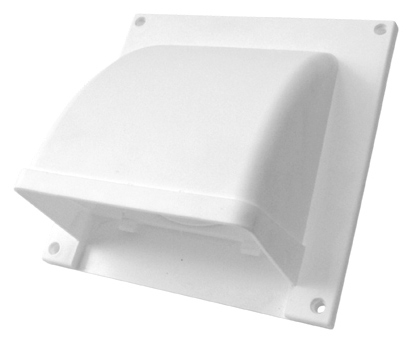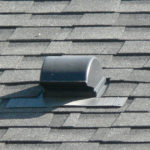 Venting through walls is often the easiest way to intake fresh air or exhaust fumes from a house. But making any hole in the exterior can compromise the integrity of the building envelope. To prevent the entry of water and stop air leaks, use a strong and watertight wall cap. Wall caps can be manufactured from metal but plastic has the advantage of being more durable and weather resistant, in particular the polymer resin type.
Venting through walls is often the easiest way to intake fresh air or exhaust fumes from a house. But making any hole in the exterior can compromise the integrity of the building envelope. To prevent the entry of water and stop air leaks, use a strong and watertight wall cap. Wall caps can be manufactured from metal but plastic has the advantage of being more durable and weather resistant, in particular the polymer resin type.
There are different wall cap models to choose from made from UV-protected polymer resin. Apart from being able to withstand the sun’s rays, this material is rustproof and highly resistant to damage. It’s easily molded into smooth, one-piece shapes, which don’t have the seams and joints that metal alternatives do.
Wall Caps
The WC series of wall caps is ideal for venting dryers, bathroom fans, range hoods and stove vents, and for the air intake for furnaces and fresh air make-up. For rainscreen applications they feature an extended base that accommodates the gap between sheathing and cladding. They come in sizes from 3” to 8” and are available in seven colors. Apart from complementing house colour, some builders have used these shades to denote whether a wall cap is being used for intake or exhaust.
Conversion from exhaust to intake use is made simple thanks to a removable damper. Using a one-piece molded base that has a built-in drip edge eliminates leaky joints. A watertight installation is provided by an over-sized flange and the hood is removable to allow easy cleaning or replacement. They come with a built-in bird screen that should not be ordered for clothes dryer applications.
If you need a vent specifically designed for residential dryers there are the low-profile DV4 and rainscreen-compatible WC4XXNS models. Both accommodate standard 4” ducting and feature a one-piece design that eliminates leaky seams.
For larger ducting in 7” or 8” sizes there is the WCL series of intake and exhaust vents. These feature an attractive low profile design that has multiple openings and a built-in bird screen. They are rainscreen compatible via the extended base which compensates for the cavity between sheathing and cladding and have an over-sized flange that ensures a water-tight installation.
Intake Vents
For intake-only purposes there’s the rainscreen compatible WCI model. This can be used for furnaces, gas appliances, fireplaces, hot water tanks, air conditioners and anywhere fresh air make-up is required. It has all the best features of the WC series with a louvered style, low-profile intake hood.
Masonry-Friendly Vents
Brick walls require a special wall cap. The WCX series has increased depth to clear masonry and is available in 4”, 5” and 6” sizes. It has an extended one-piece molded base that can compensate for the space between brick and sheathing in rainscreen applications. It has a hood that matches the WC series and shares the same choice of colors and other features. A variation on the WCX is the WCFX series, which uses a flat louvered design that doesn’t protrude as much as a hood.
Multiple Venting
In places where there is need for more than one wall cap it’s best to cut only one hole and use either the WCD double vent or WCT triple vent. These also feature a low-profile design and are rainscreen compatible. They are custom configurable in multiple sizes, come either screened or non-screened and are available in seven colours.
Adaptable Vents
For greater flexibility with inventory there’s the WC28 model. This has a standard sized hood that comes with separate snap-in adapters for either 4” or 8”ducting. The low-profile design and choice of eight colors enhances aesthetics by blending with walls and is also ideal for areas of high wind. The standard configuration of the WC28 comes with a removable screen and damper.



